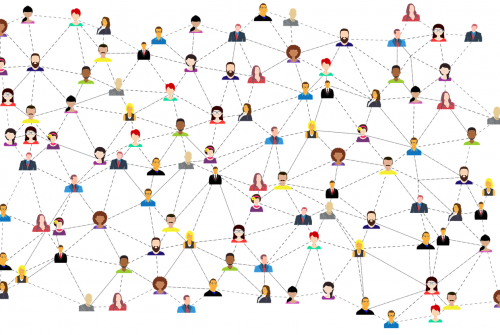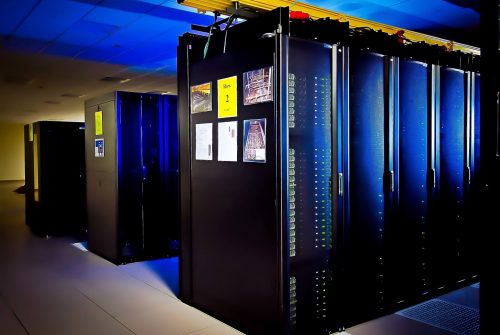Advantages and perspectives of an Augmented Intelligence
30 April 2019 | Written by Gaetano Fabiano
An innovation that is already a reality, which could lead to a revolution in strategic processes: we talked about it with Massimo Ruffolo.

The growth of a technology cannot be separated from its diffusion and concrete applications in the industrial and production world. Artificial intelligence is not excluded from this consideration: in order to be able to focus strongly on its development and to be globally competitive, Italy needs to create a network between public institutions, industry and scientific research. Precisely for this reason Ital-IA was born, a Conference promoted by the National Interuniversity Consortium for Informatics, CINI, on Artificial Intelligence, created with the objective of building a “national system” among all the actors involved in the sector, to seize the development potentials linked to this technology, outline a complete picture of AI research in our country and focus on the different application sectors.
Among the many innovations that emerged in the field of industrial application for Artificial Intelligence, we decided to deepen the theme of Augmented Intelligence, and analyze how this innovation can change business processes.
We talked about it with Massimo Ruffolo, researcher at the National Research Center and founder of a spin-off based on the campus of the University of Calabria, it offers an innovative platform to bring the benefits of Augmented Intelligence in companies.
A theme apparently new: Augmented Intelligence What does it mean and what relationship is there with Artificial Intelligence?
Augmented Intelligence is a technological approach based on big data that combines methods of machine learning, natural language processing, and data analytics with the aim of generating useful information for targeted decisions. An evolution of artificial intelligence that includes human interaction in a process of continuous involvement, aimed at improving the results obtained. Humans provide a series of examples, the machine learns a model and proposes results to humans who evaluate the quality of the model itself and choose how to reintroduce these results into the model. A technology based on Artificial Intelligence techniques in which human action is necessary and involved in a continuous cycle.
Can you give me an application example?
Let’s take a sophisticated example in which augmented intelligence responds to a complex need: Cognitive Automation. Consider how, for example, an investment bank that offers financial products needs to know as much information as possible about their customers to have a complete view of the risk. In addition to typical data, it is necessary to exploit information that often refers to factors external to the organization: alternative data. We need to collect, extract, index, explore and harmonize information from heterogeneous sources: from accounting documents, sector studies, internal databases, news on socio-political events and from the analysis of stock, bond and money market indices. The Augmented Intelligence in practice allows a “machine” to extract the data through an automatic reading of the documents and propose this data to a human user who assesses its quality. The feedback will be used to train the machine in order to obtain an increasingly precise analysis. A self-learning guided by human response, attributing a central role to continuous interaction and human knowledge.
So this is not a process that excludes man, it is a complementary process. What are the advantages that can be achieved by integrating this technology into business processes?
No, it does not exclude human action but wants to integrate human experiences into processes, bearing in mind that often, from a digital transformation perspective, many organizations prefer innovations that are not “disruptive” in their processes but that aim to transform the quality of work by automating where it is possible to do so.
It is a technology that aims to enhance human capabilities by allowing algorithms to be taught how and where to find information, so efforts can be made to converge in the interpretation of information and not in their research, which is a time-consuming activity, very much time-consuming: this is one of the main advantages for companies that choose to adopt this approach. The general advantage is that human beings can integrate part of their knowledge into the algorithms by making machines able to perform tasks on their own. Tasks that humans would perform in very long times or that they could never manage to carry out due to too large amounts of information to be analyzed.
Are companies, especially Italian ones, ready to welcome innovations in this direction?
In Italian companies, there is a strong dichotomy between business departments and technological departments. On one hand, the business understands the advantages of these technologies also because it sees how international competitors systematically apply them in their products, on the other hand, the IT departments that manage and maintain the infrastructure show resistance to change, even if from these changes there are advantages. One way to overcome these limitations is to overcome this resistance by being able to do what “large global vendors” fail to give: real help in the practical application of these technologies, minimizing impacts and building specific skills. It is necessary to innovate in terms of mentality and vision.
Companies also need investment, in addition to technology, in skills. What skills will be increasingly necessary in the future to know how to master this technological revolution derived from Artificial Intelligence that we are experiencing?
We need investments in digital skills. To use these technologies, engineers and professionals must master the knowledge of Big Data, Natural Language Processing, Machine Learning and in general Artificial Intelligence and Data Science. Here we must also dispel a myth about the figure of the Data Scientist and the Data Engineer. Many analysts predict that the distinction between these figures will soon disappear because in the term Data Scientist (those who analyze and interpret data) end up many roles whose usefulness would be nothing without those who are able to set up a suitable data architecture: Data Engineers. These figures are rare in the labor market and difficult to form. One way to minimize the need for “extreme” skills is to focus on technologies that are easy to apply, such as those based on the Augmented Intelligence paradigm. In any case, to maximize the return on investments in technology, it must be accompanied by an appropriate investment in skills.
The technologies related to these issues, from Big Data to Artificial Intelligence, are increasingly being used vertically in small and large organizations, but at the same time, there is still much to be defined. What are the ingredients to bring companies, particularly Italian ones, closer to artificial intelligence?
Think big, start small and scale quickly: this is the key. The main ingredients are purely organizational aspects: starting from visionary and convinced leaderships that push on technological innovations eliminating any structural constraint. We need a detachment from visions still based on “data silos” (isolated data archives on vertical domains) and even this is still an organizational aspect. Once these constraints are reduced, we can focus on work organizations that start from small pilot projects and allow us to quickly understand the advantages. Once obtained the “minimum viable product” (minimum practicable product or demonstrator) and once this is accepted by the end user, it can be scaled up on use cases of greater dimensions.
What are the obstacles and what are the risks associated with the spread of this technology?
Without entering into the philosophical debate concerning the expansion of artificial intelligence, where the discourse would be long and complex. The concrete risks I see in the industrialization of artificial intelligence are linked to the application without full awareness, competence, and cognition. The real risk is that these technologies are only carried by enthusiasm and promises that cannot be maintained without real competence. We risk bringing together important investments and efforts, including those of an economic nature, in fields that will bear no fruit, neither in the short term nor in the long term.
One last question: what is the challenge that, more than any other, fascinates you? What do you expect for 2050?
The challenge that fascinates me most is to be able to achieve important results in terms of the application of scientific research from Calabria, a periphery of Europe, even competing at a global level. Demonstrate that innovations related to information technology can be a driving force for economically disadvantaged areas and that when knowledge generates competence this can be used as a lever for development.
From the technological and scientific point of view, what fascinates me is to aim to raise the Augmented Intelligence and Artificial Intelligence from the level of abstraction and bring it to the end user, making it simple for applications in everyday life. Allow the common user to easily teach the machines. In the coming decades, these technologies will become more and more pervasive and will change everyday life. From banking services to transport, up to the fruition of content, through security, and human relations, for health and quality of life. All services for the person, even those with greater cognitive involvement, will be automated. Artificial intelligence in 2050 will not replace human actions but will be the cognitive element alongside the man who will accompany him in order to have a better quality of work and life.





